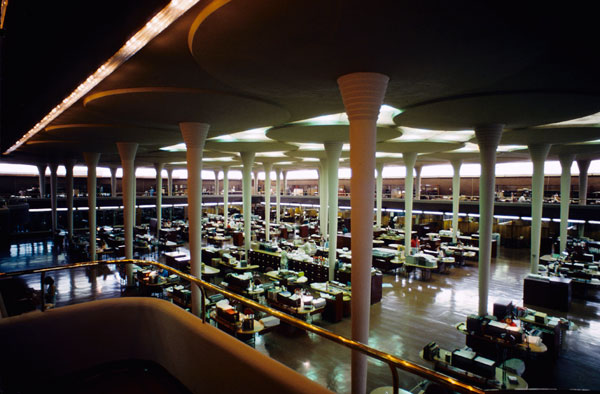It was the Veteran’s Day long weekend. Another excuse for a getaway. Charles and I went to Manchester, New Hampshire. We had a relaxing trip and yet, explored treasure in the midst of the wood.

The house that Frank Lloyd Wright designed in Manchester, N.H. nearly 60 years. (Globe Photo / Tom Herde)
We went to the Zimmerman House, which is the only residential house open to the public in the New England area, designed by the renowned American architect, Frank Lloyd Wright. According to the official from the Currier Museum of Art cited by the Boston Globe, it is “a total work of art.”
The Zimmerman House, just like other Frank Lloyd Wright’s work, has an unique style. His organic style in architecture involves rectangular and elongated shapes; vertical and horizontal lines. Perhaps the influence from the Japanese printing on Wright, his designs are very clean cut and bold. Wright is also famous in making connections between the interior and the exterior of the buildings.
The Zimmerman House sits at the corner of the main street and got hidden behind the trees. The rectangular, one-floor, red brick construction with high line windows caught our eyes the moment we made a turn from the main street. The house remains private from the front, while have open big windows at the back of the house overlooking the garden. This is an eye-open experience after seeing the Guggenheim Museum in New York. This is the only chance we have in person to experience the residential design from the master.
Other famous buildings designed by Frank Lloyd Wright:
Fallingwater (Edgar J. Kaufmann Sr. Residence), Mill Run, Pennsylvania (1937)
Johnson Wax Headquarters, Racine, Wisconsin (1936)
Solomon R. Guggenheim Museum, Manhattan, New York City (1959)




